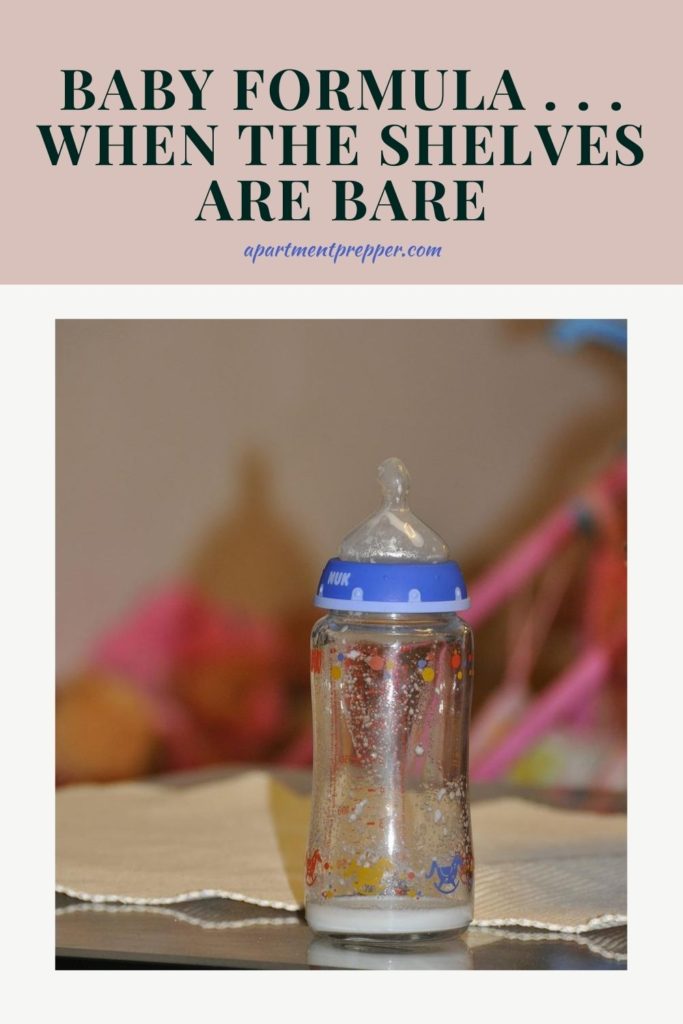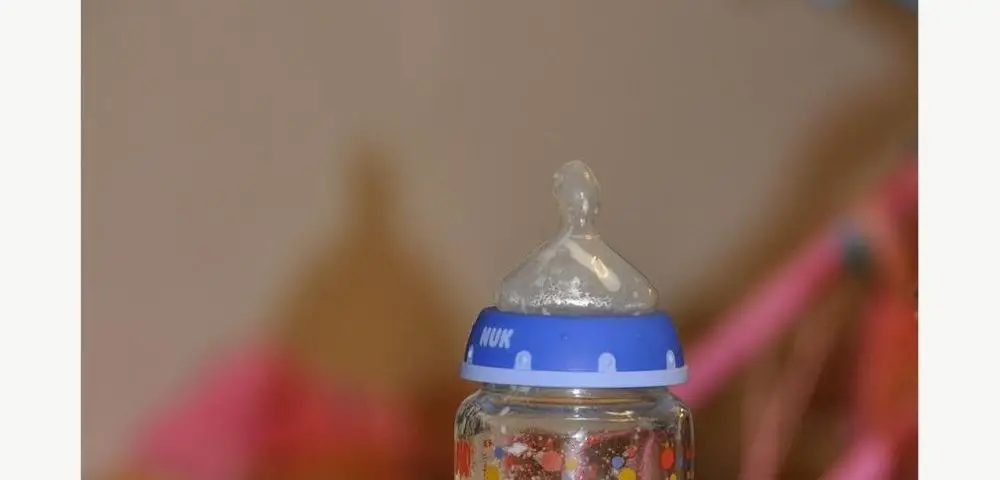(Editor’s note: We posted this article a few months ago. Unfortunately, the baby formula shortage is still going on, with many families becoming desperate and wondering how to feed their infants. we are reposting this article in case families are short on formula. This timely article is written by our guest author, Ron Brown. Homemade baby formula is not to be taken lightly and should only be used in a true emergency, and only after you have tried all other sources for finding formula. Before trying our recipes, please check with your pediatrician.)
Baby Formula . . . When the Shelves Are Bare
Written by Ron Brown 2022
My wife is from the Philippines. The population of the Philippines is 110 million. For comparison, the combined population of California, Texas, New York State, and Florida is 109 million.
The Philippines is an island country — over 7000 islands, about 2000 of which are inhabited. People in the more remote islands don’t have electricity and don’t see a grocery store from one year’s end to the next. But they do have babies.
The poverty rate in the Philippines is 23.7%. That’s 26 million poor people. And they, too, have babies.
One home recipe for baby formula calls for powdered milk — one part powdered milk to three or four parts water. More sophisticated recipes call for a touch of sugar and cooking oil.
My wife remembers her sister-in-law (who had four kids) running out of store-bought baby formula and substituting canned, evaporated milk plus water. Sweetened condensed milk was also used on occasion.
In the USA, back when I was a kid, baby formula made from evaporated milk was common. The recipe was 13 ounces of evaporated milk, 19 ounces of water, and 2 tablespoons of corn syrup or sugar. Here’s a one-minute PET Milk TV commercial from 1952. It’s an eye-opener: https://www.youtube.com/watch?v=0XsQel_c_0I
But what about the Filipinos in remote locations who rarely even see canned or powdered milk? Not to mention those who live in poverty and can’t afford to buy milk? What do they use?
Answer: They feed rice water. (And not just poor people do this. Many well-to-do folks feed rice water as a matter of choice.) They boil white rice, pour off the cooking water, and feed the cooking water to the baby. Aside: If a baby on a more conventional diet has diarrhea, rice water is used as a cure.
“To make rice water for babies, boil 2½ cups of water in a deep non-stick pan, add ¼ cup rice and mix well. Cover it with a lid and cook on a medium flame for 10 minutes, while stirring occasionally. Strain it using a strainer and retain the rice water. Serve the rice water for babies lukewarm.”
SOURCE: Tarladalal.com, Rice Water for Babies
Today’s snooty Americans, of course — who cannot imagine life without the internet or cell phones or Medicare — don’t know of any of this stuff.
“Four companies made 90% of the all infant formula sold in the United States. (1) “In the 1870s, Nestle’s Infant Food . . . became available in the US, selling for $.50 a bottle.”
Contemporary Pediatrics
Then (2) Mead Johnson introduced a “milk modifier” in 1911. And (3) Abbott Nutrition introduced Similac in 1925. And (4) Perrigo has made and sold store-brand infant formula for the past 20 years.
However, “In February [2022], Abbott closed its infant formula plant in Michigan [one of several Abbot plants that make infant formula in the US] after the Food and Drug Administration found contamination at the facility from the bacteria Cronobacter sakazakii. Four infants who ate powered formula from the plant were hospitalized with Cronobacter, two of whom died.”
An FDA review of company records revealed that Cronobacter bacteria had earlier been detected in finished batches of formula in 2019 and 2020.
That somewhat dents the sacrosanct-ness of store-bought, factory-made infant formula, no?
Although the idea may be jaw-dropping to many, I believe IT IS possible to live without store-bought baby formula (just as my ancestors did for thousands of years before Nestlé). Check out Where There Is No Doctor by David Wermer and Nuclear War Survival Skills by Cresson Kearny. Free PDF’s are available online.
Where There Is No Doctor has a section entitled “The Best Diet For Small Children” starting on page 120. Nuclear War Survival Skills has a section entitled “Emergency Food for Babies” starting on PDF-page 95 (and not page 89 as it says in the paper-version index). If you consider yourself a prepper, this is really worthwhile stuff to know.
About the Author
I’m a retired engineer. I live in the countryside in upstate New York (not to be confused with New York City). My only real claim to fame is a series of eight books on Amazon entitled “The Non-Electric Lighting Series.” Each book in the series is available in both Kindle and paper format. The series has been well received. Whenever I’m feeling sorry for myself I review the readers’ comments. And I always come away smiling. Gee, maybe I’m not such a bad guy after all.
We are an affiliate of Amazon.com, which means we received a small commission if you click through one of our Amazon links when you shop, at totally no cost to you. This helps keep the lights on at the blog. Thanks!
Image by karin_van_Duke from Pixabay



Thanks for the reprint, Bernie. A Google search for “baby formula shortage” shows that, indeed, it isn’t over yet (and that fact alone blows my mind). It looks to me — with all the stuff going on in the world (Russia, Ukraine, China, Taiwan, etc.) — that the age of prepping, the age of being prepared, is upon us. And the last thing anybody needs is a hungry baby plus a dose of ignorance about what can be used as baby food. So, again, thank you.
Hi Ron, It is unimaginable this is still happening. Still a timely article-thanks again for guest posting! 🙂